If you know bell peppers very well, you have an idea of how colorful peppers can be. Most peppers are green in their unripe form. But as they ripen, they take on other colors, including red, orange, yellow, black, and even purple.
Peppers are most commonly red when ripe, but the orange varieties are not hard to come by. In fact, in some cases, some red peppers actually have more of an orange shade to them.
There are many orange pepper varieties out in the world. Each one differs in its uses, flavor, taste, and spiciness.
In this article, we discuss 13 types of orange peppers. We check out their flavor, uses, Scoville Heat Unit (SHU), and much more.
Table of Contents
1. Banana Pepper

Banana peppers are so named because of their banana-like shape and yellow-green hue. They are typically available in a yellowish-green color but may also present as orange or red when ripe.
Banana peppers, also called yellow wax peppers, are medium-sized peppers. They are sweet and mildly spicy, and they are typically pickled for use on deli sandwiches. Banana peppers may also be used on pizzas and salads.
Banana peppers get sweeter as they become ripe. So, compared to yellow banana peppers, orange banana peppers are sweeter.
Banana peppers are a great source of vitamin C. They have a Scoville Heat Unit of 0 to 500.
2. Bell Pepper
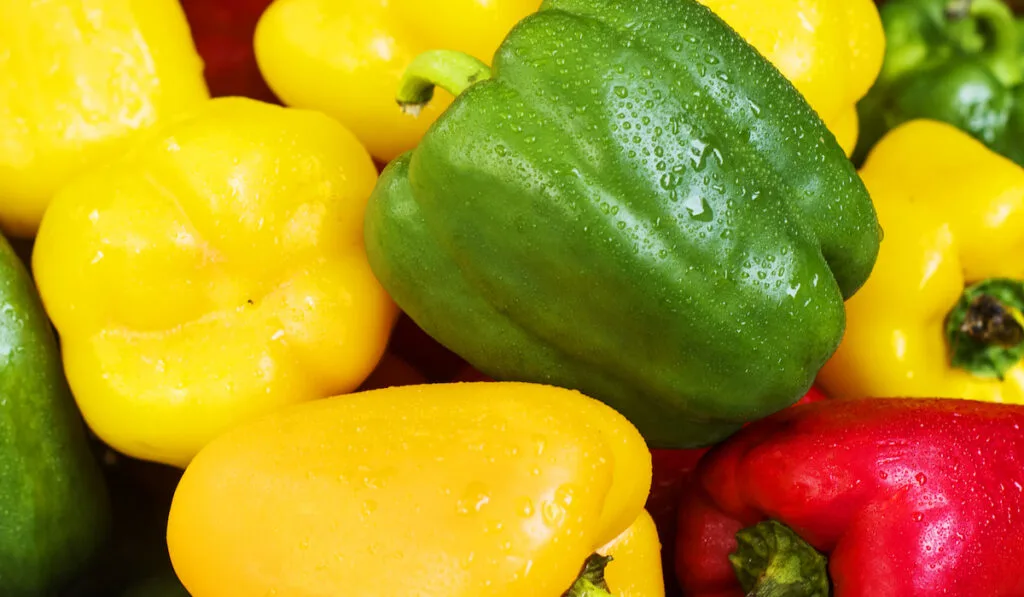
Bell peppers are available in many colors, including orange, red, purple, green, and brown. They are sweet and flavorful, and unsurprisingly, they are well-accepted by most people.
Bell peppers can be used in salads, salsas, sandwiches, stuffing, and many other dishes. You can prepare them by sautéing, grinding, or roasting them.
Bell peppers are not spicy. So, if you are wary of pepper heat, they are ideal for you.
Bell pepper has a SHU of 0.
3. Bird’s Eye Pepper
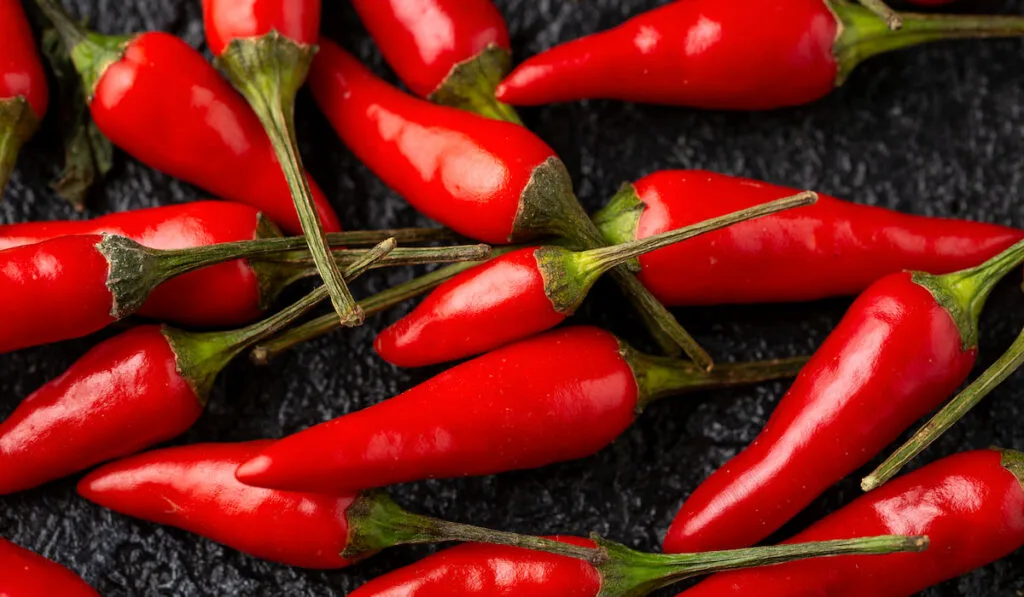
Bird’s eye pepper may also be called Thai Chile. It is commonly used in Thai dishes and Asian cuisines.
Bird’s eye peppers are available in various colors, including green and orange. They may be small-sized, but they hold a lot of spice within.
The heat of Bird’s eye peppers is put to great use in soups, sambals, salads, stews, marinades, among other dishes. Spice is not all there is to bird’s eye peppers as they also offer a fruit-like flavor.
Bird’s eye pepper has a SHU of around 50,000 – 100,000.
4. Cherry Bell Pepper
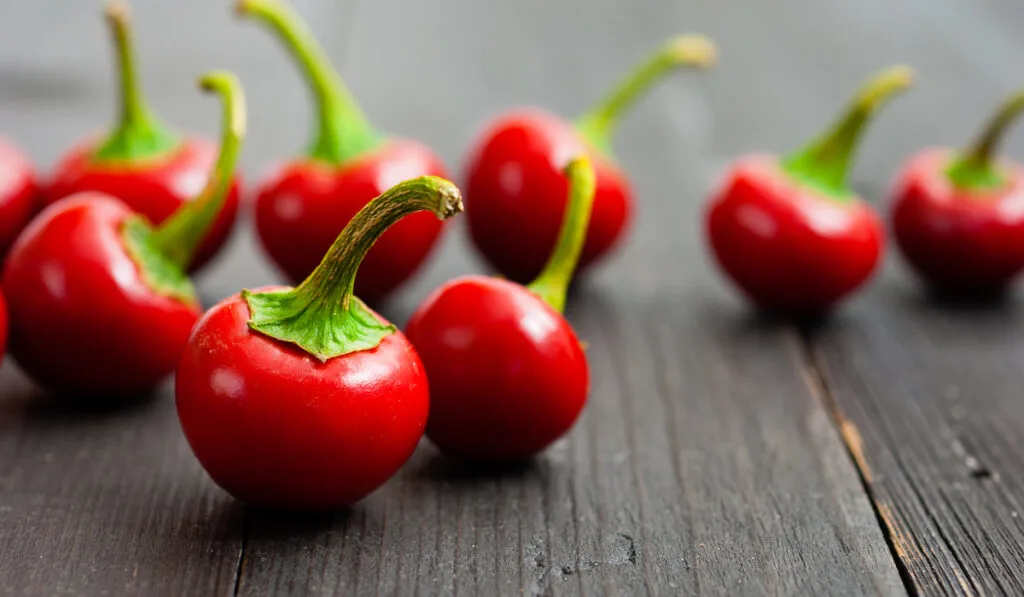
Cherry peppers, also known as Pimiento or Pimento, are mildly hot peppers that look like cherries. They are small-sized, sweet, and can be used for various culinary purposes.
Cherry peppers are used in making Pimento cheese. But they can also be used in pickling and flavoring various dishes.
Cherry peppers fall in the second mildest class of peppers. They are typically sold in pickle jars, and they have a SHU of 100 to 500.
5. Fresno Pepper
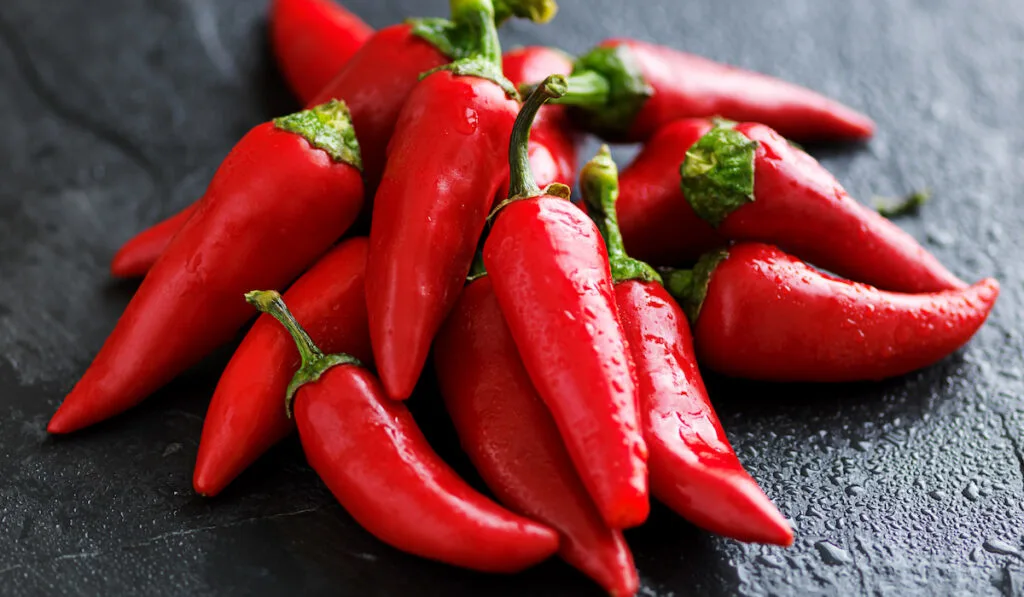
Fresno peppers are of New Mexican origin, but they are pretty easy to come by in California.
Fresno peppers are pretty similar to Jalapenos. However, they have a fruitier flavor and more heat than Jalapenos.
Generally, as Fresno peppers become ripe, they become fruitier, smokier, and grow more flesh.
Fresno peppers are not too hot, but they can be used to add some kick to meals. They can be used in preparing soups, dips, and stews. Fresno peppers may also be used in stuffing, or they may be roasted.
Fresno peppers have a SHU of 2,500 to 10,000.
6. Ghost Pepper
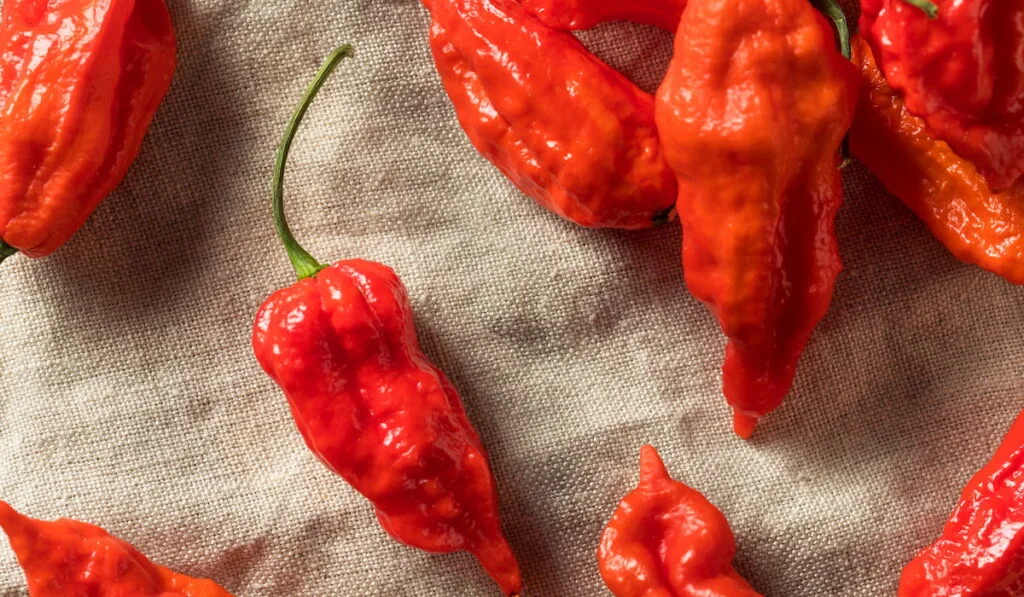
We would not recommend that you eat Ghost peppers; they are one of the hottest peppers and are not the type of spice you want in your everyday meal. However, if you do use them, handle them carefully.
While Ghost peppers are super spicy, they fall short of peppers like the Trinidad Moruga Scorpion and Carolina Reaper. Nonetheless, they are about 100 to 400 times as hot as Jalapenos.
Ghost peppers come in various colors, including orange, red, brown, and purple. They may be used in chutney, pickle, and curry—of course, in tiny amounts.
Ghost peppers are also called Bhut Jolokia. They originated in northeastern India and have a SHU of 1,000,000.
7. Habanero
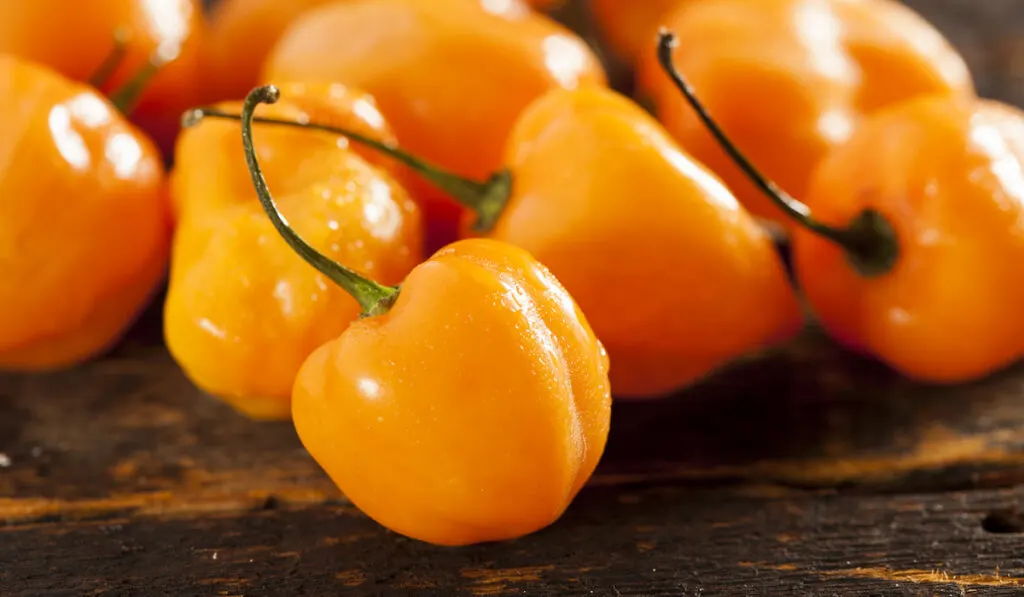
Habaneros come in various colors, but orange Habaneros are the most common. They are one of the hottest peppers readily available to everyone.
Habaneros have thin walls, and beyond their spiciness, they are pretty sweet, citrusy, and aromatic.
Habaneros are popularly used in the Mexican Yucatan Peninsula for hot sauce preparation. The same application is also common in the Caribbean. Besides hot sauces, Habaneros can be used in making salsas and salads.
Habaneros have a SHU of around 100,000 to 350,000.
8. Jalapeno

Jalapenos are one of the most widely known peppers in the world. They are native to Mexico, and they are named after Jalapa (Xalapa), the capital of Veracruz, a Mexican state.
Jalapenos are also called Chipotle. They are usually picked when green. However, they may ripen to become orange or red.
Jalapenos are hot but nowhere near as hot as Ghost peppers. You can add them to soups, chilis, salads, guacamoles, and much more. Jalapenos may also be used in stuffing, or they may be eaten as a fried snack.
Jalapeno peppers have a SHU of 2,500 to 8,000.
9. Mini Sweet Pepper
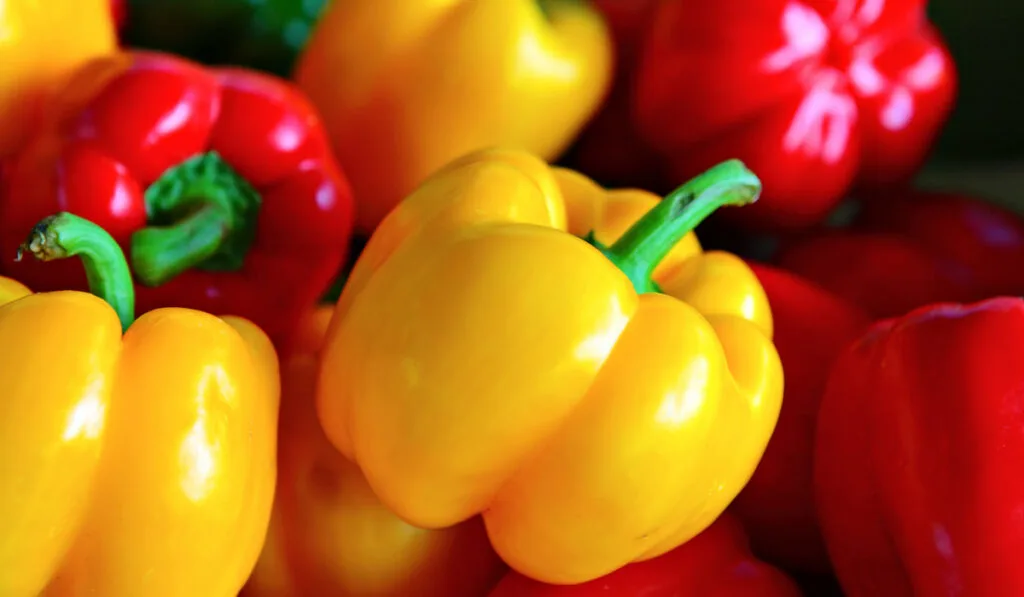
Mini sweet peppers are sometimes called mini bell peppers. They look a lot like bell peppers, so the alternate name is expected. In fact, both types of peppers have almost the same taste. However, relative to bell peppers, mini sweet peppers have fewer seeds and are smaller-sized and tastier.
You can use mini sweet peppers in about every way you can use bell peppers: from spicing meals up to adding them to salads and salsas. You can roast mini sweet peppers and sauté them like you would with bell peppers. You may also make them into scoops for dips.
Mini sweet peppers have a SHU of 0.
10. Rocoto Pepper
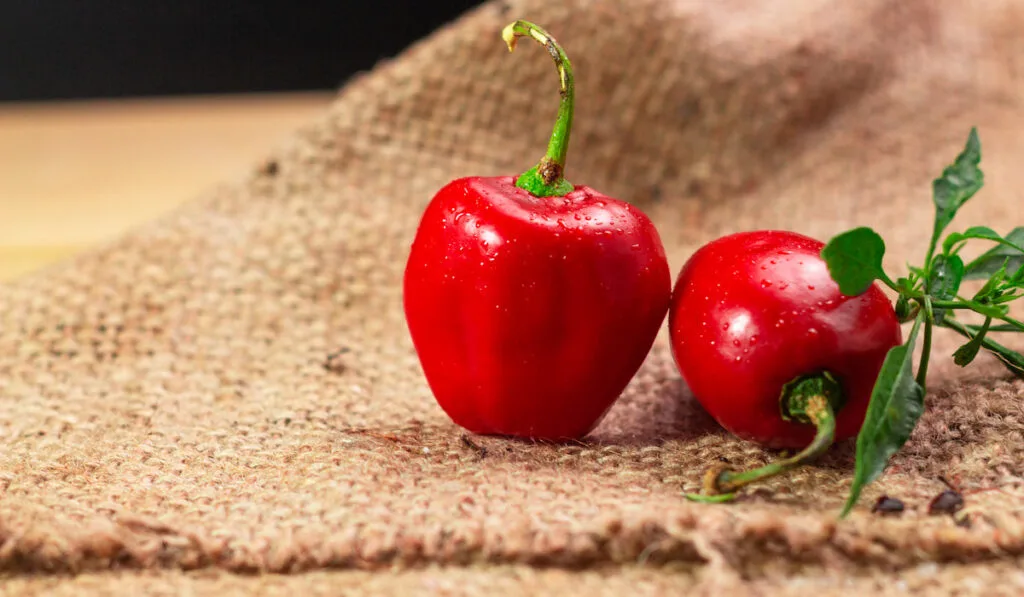
Like mini sweet peppers, Rocoto peppers look like bell peppers. But while mini sweet peppers and bell peppers have no heat, Rocoto peppers are pretty hot.
Rocoto Peppers have sweet, crisp skin, a fruity flavor, and are as spicy as Habaneros. They are available in different colors, such as orange, yellow, and red. Rocoto pepper seeds are black, and their flesh is plentiful.
Rocoto peppers are primarily used in preparing salsas. But they may also be used in preparing soups, stews, and hot sauces.
Rocoto peppers have a SHU of around 30,000 to 100,000.
11. Scotch Bonnet
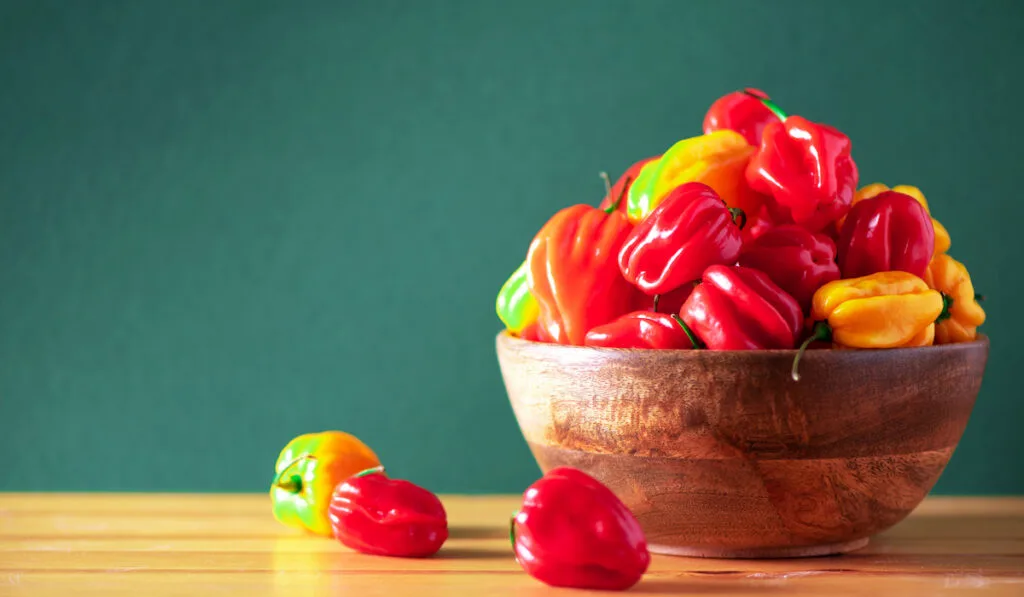
Named after Tammie (a type of Scottish hat), Scotch Bonnets are sweet, spicy peppers. They are about as hot as Habaneros, but they offer more sweetness.
Scotch Bonnets also go by Bonney pepper and Caribbean Red pepper. They are available in green, red, orange, and yellow.
Scotch Bonnets are great for use in Caribbean dishes. They are also needed to prepare jerk seasoning, and overall, you can use them to add some kick to your meals.
Scotch Bonnets have a SHU of 80,000 to 350,000.
12. Serrano Pepper
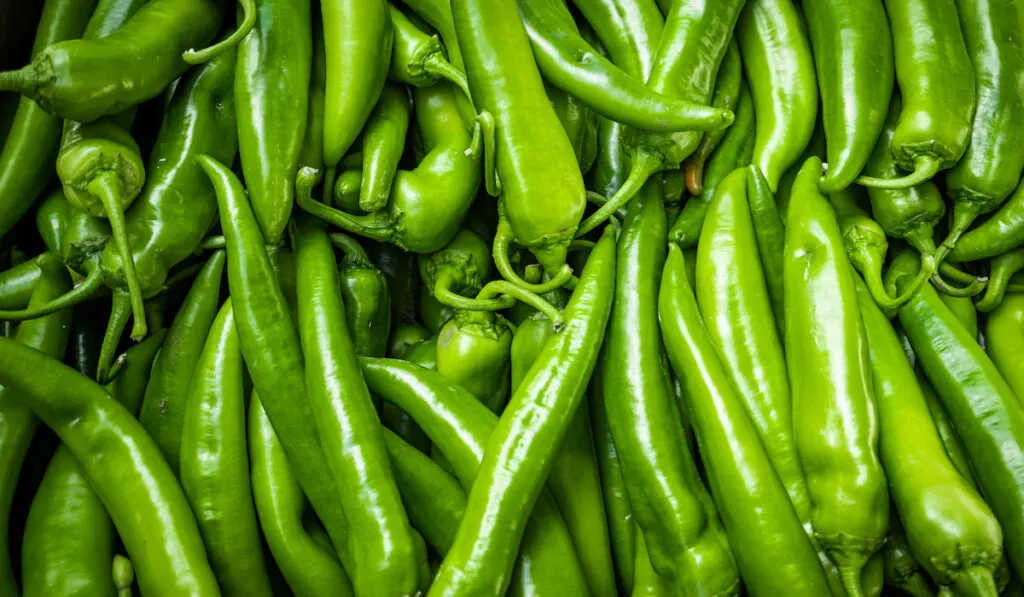
Serrano peppers are widely used in Mexican dishes, and this is understandable since they are native to Mexico. They are widely available as unripe green fruits. But they can turn red, orange, or yellow when ripe.
Serrano peppers hold more heat than Jalapenos. But this does not stop their use in various dishes.
Serrano peppers can be processed by drying, pickling, or roasting them. They are used in making chiles and guacamoles. They are also used in preparing salsa—their thick skin makes them ideal for this purpose.
Serrano peppers have a SHU of 10,000 to 23,000.
13. Tabasco Pepper
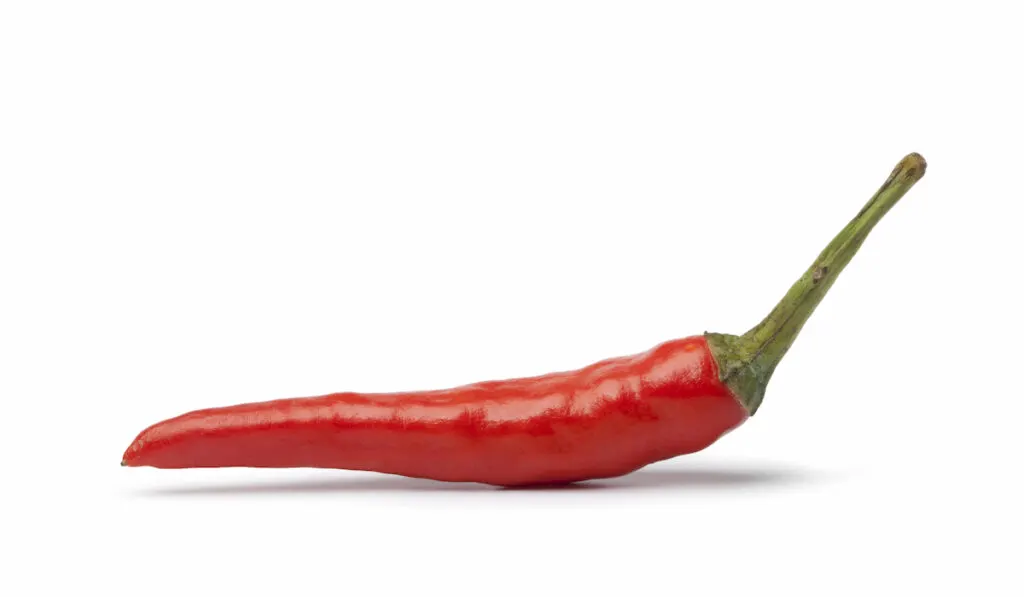
If you have had Tabasco hot sauce, you have an idea of what Tabasco peppers are. Tabasco peppers grow all over the world, so you can readily get them. While they typically turn red when ripe, they may also be orange.
Tabasco peppers are unique for their juiciness; unlike other chili peppers, they are not dry inside.
Tabasco peppers are pretty hot. But when used to make Tabasco hot sauce, they are mixed with vinegar and salt. So, their heat is subdued significantly.
While Tabasco peppers have a SHU of 30,000 to 60,000, the hot sauce has a SHU of 2,500 to 5,000.
Resources
- https://www.epicurious.com/ingredients/20-types-of-peppers-and-their-uses-article
- https://www.jessicagavin.com/types-of-peppers
- https://www.goodhousekeeping.com/food-recipes/cooking/g27556089/types-of-peppers
- https://growinginthegarden.com/types-of-peppers-pepper-varieties
- https://www.purewow.com/food/types-of-peppers
- https://greatist.com/eat/cayenne-habanero-poblano-serrano-know-your-chile-peppers
- https://www.purewow.com/food/types-of-peppers
